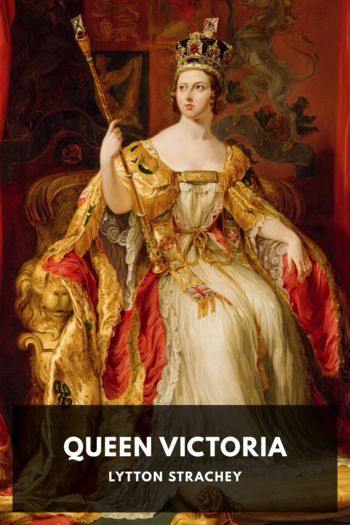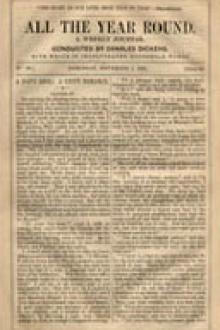Eminent Victorians Lytton Strachey (sight word books txt) 📖

- Author: Lytton Strachey
Book online «Eminent Victorians Lytton Strachey (sight word books txt) 📖». Author Lytton Strachey
The Tracts were written “with the hope of rousing members of our Church to comprehend her alarming position … as a man might give notice of a fire or inundation, to startle all who heard him.” They may be said to have succeeded in their objective, for the sensation which they caused among clergymen throughout the country was extreme. They dealt with a great variety of questions, but the underlying intention of all of them was to attack the accepted doctrines and practices of the Church of England. Dr. Pusey wrote learnedly on Baptismal Regeneration; he also wrote on Fasting. His treatment of the latter subject met with considerable disapproval, which surprised the Doctor. “I was not prepared,” he said, “for people questioning, even in the abstract, the duty of fasting; I thought serious-minded persons at least supposed they practised fasting in some way or other. I assumed the duty to be acknowledged and thought it only undervalued.” We live and learn, even though we have been to Germany.
Other tracts discussed the Holy Catholic Church, the Clergy, and the Liturgy. One treated of the question “whether a clergyman of the Church of England be now bound to have morning and evening prayers daily in his parish church?” Another pointed out the “Indications of a superintending Providence in the preservation of the Prayerbook and in the changes which it has undergone.” Another consisted of a collection of “Advent Sermons on Antichrist.” Keble wrote a long and elaborate tract “On the Mysticism attributed to the Early Fathers of the Church,” in which he expressed his opinions upon a large number of curious matters.
“According to men’s usual way of talking,” he wrote, “it would be called an accidental circumstance that there were five loaves, not more nor less, in the store of Our Lord and His disciples wherewith to provide the miraculous feast. But the ancient interpreters treat it as designed and providential, in this surely not erring: and their conjecture is that it represents the sacrifice of the whole world of sense, and especially of the Old Dispensation, which, being outward and visible, might be called the dispensation of the senses, to the Father of our Lord Jesus Christ, to be a pledge and means of communion with Him according to the terms of the new or evangelical law.
“They arrived at this idea by considering the number five, the number of the senses, as the mystical opponent of the visible and sensible universe—τὰ αἰσθητὰ, as distinguished from τὰ νοητὰ. Origen lays down the rule in express terms. ‘The number five,’ he says, ‘frequently, nay almost always, is taken for the five senses.’ ”
In another passage, Keble deals with an even more recondite question. He quotes the teaching of St. Barnabas that “Abraham, who first gave men circumcision, did thereby perform a spiritual and typical action, looking forward to the Son.” St. Barnabas’s argument is as follows: Abraham circumcised of his house men to the number of 318. Why 318? Observe first the 18, then the 300. Of the two letters which stand for 18, 10 is represented by I, 8 by H. “Thou hast here,” says St. Barnabas, “the word of Jesus.” As for the 300, “the Cross is represented by Tau, and the letter Tau represents that number.” Unfortunately, however, St. Barnabas’s premise was of doubtful validity, as the Rev. Mr. Maitland pointed out, in a pamphlet impugning the conclusions of the Tract.
“The simple fact is,” he wrote, “that when Abraham pursued Chedorlaomer ‘he armed his trained servants, born in his own house, three hundred and eighteen.’ When, more than thirteen (according to the common chronology, fifteen) years after, he circumcised ‘all the men of his house, born in the house, and bought with money of the stranger,’ and, in fact, every male who was as much as eight days old, we are not told what the number amounted to. Shall we suppose (just for the sake of the interpretation) that Abraham’s family had so dwindled in the interval as that now all the males of his household, trained men, slaves, and children, equalled only and exactly the number of his warriors fifteen years before?”
The question seems difficult to answer, but Keble had, as a matter of fact, forestalled the argument in the following passage, which had apparently escaped the notice of the Rev. Mr. Maitland:
“Now whether the facts were really so or not (if it were, it was surely by special providence), that Abraham’s household at the time of the circumcision was exactly the same number as before; still the argument of St. Barnabas will stand. As thus: circumcision had from the beginning, a reference to our Saviour, as in other respects, so in this; that the mystical number, which is the cipher of Jesus crucified, was the number of the first circumcised household in the strength of which Abraham prevailed against the powers of the world. So St. Clement of Alexandria, as cited by Fell.”
And Keble supports his contention through ten pages of close print, with references to Aristeas, St. Augustine, St. Jerome, and Dr. Whitby.
Writings of this kind could not fail in their effect. Pious youths in Oxford were carried away by them, and began to flock around the standard of Newman. Newman himself became a party chief—encouraging, organising, persuading. His long black figure, swiftly passing through the streets, was pointed at with awe; crowds flocked to his sermons; his words were repeated from mouth to mouth; “Credo in Newmannum” became a common catchword. Jokes were made about the Church of England, and practices, unknown for centuries, began to be revived. Young men fasted and did penance, recited the hours of the Roman Breviary, and confessed their sins to Dr. Pusey. Nor was the movement confined to Oxford; it spread in widening circles through the parishes of England; the dormant devotion of the country was suddenly aroused. The new strange





Comments (0)